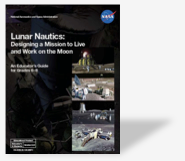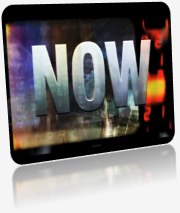NES Web Seminar — Newton’s Laws of Motion: Lunar Nautics
NASA Explorer Schools and the National Science Teachers Association are hosting a 90-minute live professional development Web seminar for educators on Dec. 19, 2013, at 6:30 p.m. EST. This seminar features three lessons for grades 6-8 that focus on a real-world understanding of Newton’s Laws of Motion and common misconceptions associated with the laws. The featured lessons are Rocket Staging: Balloon Staging and Lunar Landing: Swinging Tray and Lunar Base Supply Egg Drop.
The featured activities provide opportunities for incorporating national science, technology and mathematics learning standards into curricula as well as address middle school Next Generation Science Standards.
This is the only time during this school year that this seminar will be offered.
For more information and to register online, visit http://learningcenter.nsta.org/products/symposia_seminars/NES4/webseminar24.aspx.

 In this
In this  Students of NASA Explorer Schools educator Dennis Hagen-Smith from Toluca Lake Elementary School completed the Balloon Rocket Experiment from the lesson Newton’s Laws of Motion: Lunar Nautics. This activity is a simple demonstration of rocket staging first proposed by Johann Schmidlap in the 16th century. Hagen-Smith’s students learned how rockets achieve greater distances through staging. They also found out that it takes an enormous amount of energy to boost an object into space.
Students of NASA Explorer Schools educator Dennis Hagen-Smith from Toluca Lake Elementary School completed the Balloon Rocket Experiment from the lesson Newton’s Laws of Motion: Lunar Nautics. This activity is a simple demonstration of rocket staging first proposed by Johann Schmidlap in the 16th century. Hagen-Smith’s students learned how rockets achieve greater distances through staging. They also found out that it takes an enormous amount of energy to boost an object into space. NASA Explorer Schools is kicking off the 2011-2012 school year with the very first electronic professional development Web seminar — Lunar Nautics. The event takes place on July 21, 2011, at 9:30 a.m. EDT. It highlights three featured lessons from the Lunar Nautics educator guide, one of the most popular NES middle school teaching materials:
NASA Explorer Schools is kicking off the 2011-2012 school year with the very first electronic professional development Web seminar — Lunar Nautics. The event takes place on July 21, 2011, at 9:30 a.m. EDT. It highlights three featured lessons from the Lunar Nautics educator guide, one of the most popular NES middle school teaching materials: A lunar eclipse occurs when the moon passes behind Earth so that Earth blocks the sun’s rays from striking the moon. This can occur only when the sun, Earth and moon are aligned exactly, or very closely, with Earth in the middle. Hence, there is always a full moon the night of a lunar eclipse.
A lunar eclipse occurs when the moon passes behind Earth so that Earth blocks the sun’s rays from striking the moon. This can occur only when the sun, Earth and moon are aligned exactly, or very closely, with Earth in the middle. Hence, there is always a full moon the night of a lunar eclipse. In this episode of NASA Now, Camille Alleyne, Assistant Program Scientist for the International Space Station discusses the unique research environment onboard the ISS while sharing information about many of the past, present and planned experiments. To date, more than three hundred experiments have been conducted on the ISS. Through this research, we will better understand the effects of microgravity on the human body, further develop technology, and expand our knowledge about our Earth and about the universe.
In this episode of NASA Now, Camille Alleyne, Assistant Program Scientist for the International Space Station discusses the unique research environment onboard the ISS while sharing information about many of the past, present and planned experiments. To date, more than three hundred experiments have been conducted on the ISS. Through this research, we will better understand the effects of microgravity on the human body, further develop technology, and expand our knowledge about our Earth and about the universe. Patricia Smeyers, a teacher from Secaucus Board of Education, has a great idea for a Lunar Rover Project. Students design a new lunar rover for the future. They create their designs using cloud-based 3-D modeling software and present their engineered 3-D model and research.
Patricia Smeyers, a teacher from Secaucus Board of Education, has a great idea for a Lunar Rover Project. Students design a new lunar rover for the future. They create their designs using cloud-based 3-D modeling software and present their engineered 3-D model and research. Liz Warren, NASA Johnson Space Center operations lead for the International Space Station Medical Project, discusses why exercise and nutrition are important to maintaining good health on Earth and even more important to astronauts on the International Space Station. She also discusses how living in space causes changes in the human body such as loss of bone density, decreased cardiovascular fitness, and muscle atrophy. Astronauts participate in experiments to measure changes in their bodies so that we can prevent those types of changes in the future.
Liz Warren, NASA Johnson Space Center operations lead for the International Space Station Medical Project, discusses why exercise and nutrition are important to maintaining good health on Earth and even more important to astronauts on the International Space Station. She also discusses how living in space causes changes in the human body such as loss of bone density, decreased cardiovascular fitness, and muscle atrophy. Astronauts participate in experiments to measure changes in their bodies so that we can prevent those types of changes in the future.